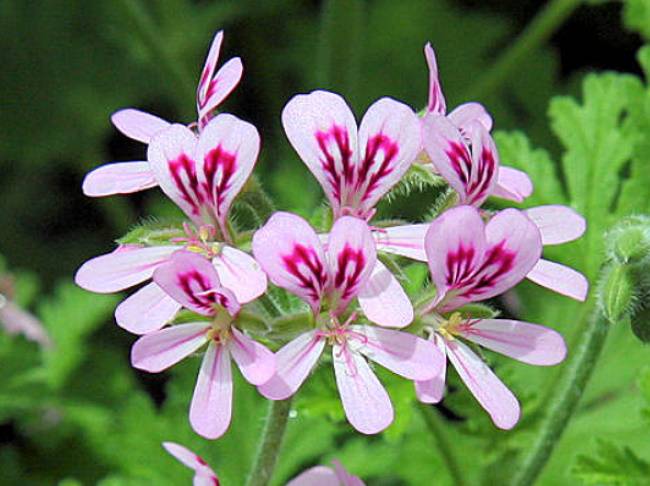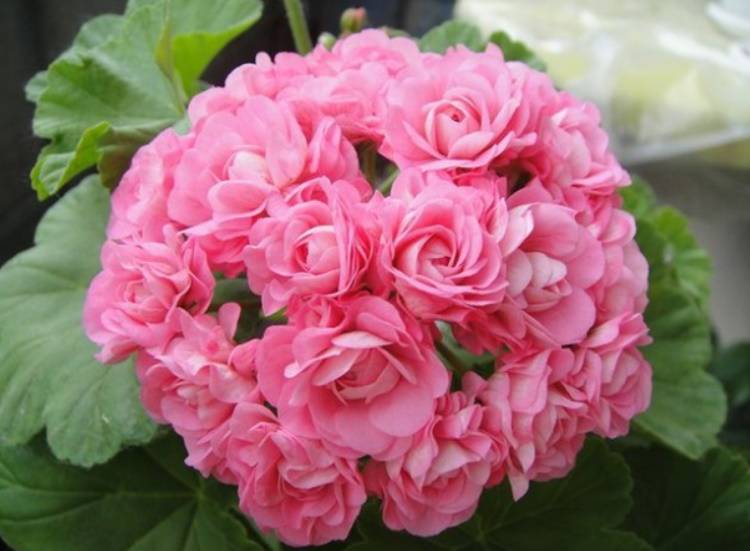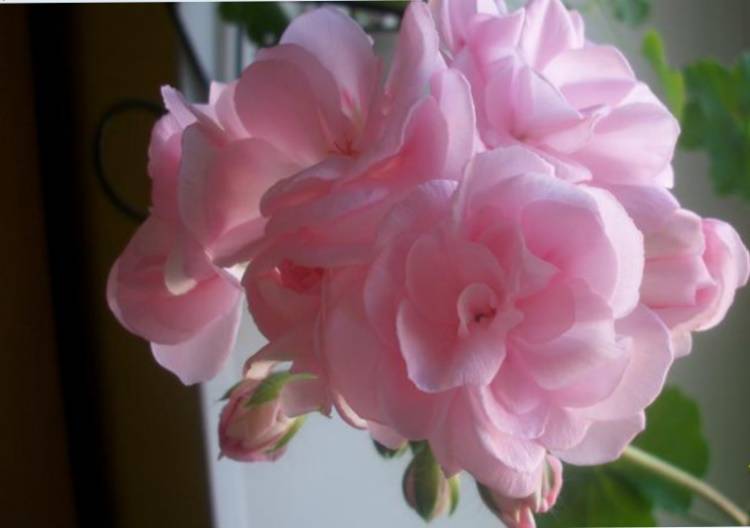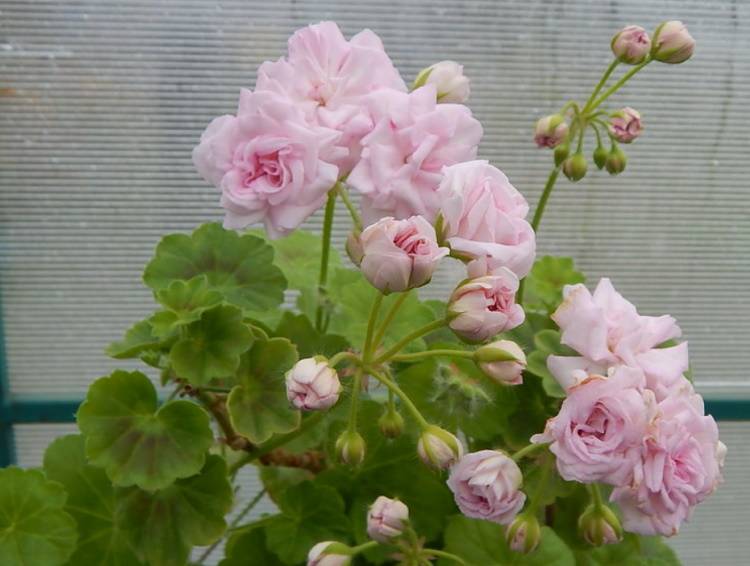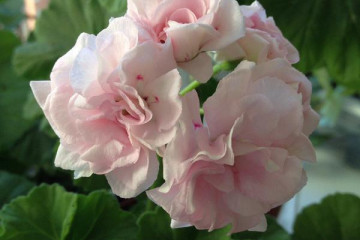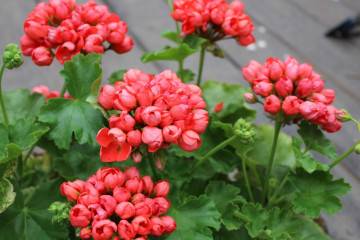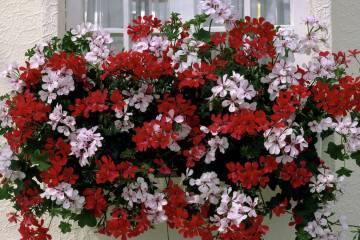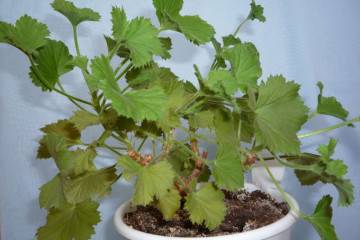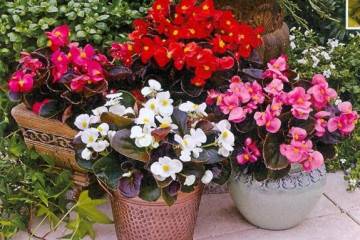Pelargonium Millfield Rose
Content:
Pelargoniums are flowering herbaceous shrubs, which from the middle of the 17th century. decorate European homes and gardens. Over the long history of plant breeding and crossing, lovers of home gardening have received at their disposal 250 species of pelargonium, united in the genus Pelargonium, which is part of the Geraniaceae family. Pelargonium Millfield Rose is one of the most popular and beautiful representatives of this genus.
Pelargonium Milfield Rose - what is this flower
In addition to Pelargonium, the Geranium family includes 6 more genera, which unite 840 plant species. Pelargoniums are often confused with plants of the genus Geranium and are called geraniums. But geraniums and pelargoniums are plants that differ in their genetic characteristics, which do not interbreed with each other.
Florists can only develop new varieties of flowers within one genus. Flowers of the genus Pelargonium are thermophilic flowering herbs. Plants from the genus Geranium are cold-tolerant and can be grown outdoors as perennials in temperate climates.
The numerous modern varieties of pelargonium are divided into 4 main groups:
- zonal - in bright light, characteristic color spots or rings form on their leaf plates;
- royal - have multi-colored large flowers with corrugated or fringed petals;
- fragrant - bloom with small, simple inflorescences, are distinguished by wavy leaves, emitting strong aromas of different shades;
- ivy-leaved - ampelous or standing bushes with smooth leaves in the form of ivy leaf plates, inflorescences of any shape are typical for them - double, pink (rosebud), simple, with colors from white to black and burgundy.
Description of Pelargonium Millfield Rose
The genetic properties of the two plant species have turned the hybrid Milfield Rose pelargoniums into extraordinary-looking bushes with large lush inflorescences with ivy-shaped leaves that have zonal spots. With the onset of long daylight hours, the dark green leaves of the Milfield Rose geranium (as some call the plant) appear rounded areas bordered by brown stripes.
The high decorativeness of the hybrid, its lush forms depend on the timely care of the plant, pruning. Without garters and haircuts, the erect stems of the flower will begin to stretch, and the compact bush will turn into a spreading one with hanging or sprawling branches.
A variety of Ivy-hybrid plants, Pelargonium Millfield Gem is the second most popular flower in the subgroup. Pelargonium Milfield Jam has a significant difference from its close relative - double, not pink-like inflorescences. But both plants are called the first ladies among flowers.
How to care for Millfield Rose at home
Flower growers who dream of decorating such beautiful plants as Milfred Rose Pelargonium in their home greenhouses or simply window sills are sometimes afraid of the difficulties that can arise when growing these flowers.
In order for flowering shrubs belonging to the genus Pelargoniu to always be beautiful and delight their owners for at least 5 years, it is necessary to create optimal temperature and humidity conditions for plants, long daylight hours, and sufficient watering.
Illumination and temperature conditions
Plants of the genus Pelargoniu are separated from Geranium flowers according to the main characteristic - cold resistance. For flowers such as Millfield Gem, Millfield Rose, lowering the air temperature to at least 0 ° C will be disastrous. Therefore, when growing them, a microclimate is created with warm air in the range of 20-27 ° C and air humidity not higher than 70%.
In order for the bushes to form buds and bloom double inflorescences or flowers in the form of roses, plants need a long daylight hours of at least 14 hours. Some growers especially for Geraniums acquire phytolamps in order to achieve winter flowering of hybrids with their help.
With the onset of warmth, flowers can be transplanted into open ground in well-lit areas of the garden or taken out in individual pots on terraces and balconies. In this case, make sure that there is partial shade over the flowers at noon and the plants do not receive leaf burns.
Watering rules and humidity
Indoor flowers of the Geraniev family in the warm season need regular watering. Use settled water at room temperature. The best watering option is through the bottom pan. A signal that the plant suffers without moisture will be the pale leaves of the flower.
In winter, if dormant conditions are created for the plant, that is, they do not extend the daylight hours and are taken out into a room with an air temperature of 12-15 ° C, watering is carried out occasionally - as the soil in the pot dries up to half. If the plant continues to grow and bloom during the winter months, the same regular watering is carried out as in the summer.
Top dressing and soil quality
Abundantly flowering pelargoniums are demanding on the type of soil, therefore, with the beginning of the growing season and flowering, they need regular feeding. They use special complex fertilizers for root dressing of flowers or independently prepare a composition of potash and phosphorus components. Top dressing is carried out after the main watering of the root zone no more than 1 time in 15 days. During the dormant period, the plants are not fertilized.
Pruning and removing leaves and peduncles
So that the bush does not lose its decorative effect, dried leaves and peduncles are regularly cut off. This is done using sharp sterile instruments to prevent damage to the stems and prevent wound decay. The plant needs two main clippings:
- healing autumn is carried out after the plant stops flowering, the elongated, leafless stems are removed;
- spring pruning is aimed at giving the bush the necessary shape and stimulating the growth of dormant buds.
Reproduction of Millfield Rose
Hybrid flowers are propagated only by cuttings or by dividing the bush. With the seed method of reproduction, the hereditary characteristics of the flower may not be transmitted. Cuttings are cut from thick, healthy stems about 15 cm high. This can be done in spring and autumn after flowering. The cut parts of the stems are rooted in water or soil in mini-greenhouses.
Growing problems
In plants, the stems will elongate and become thin and brittle, the leaves will begin to turn yellow and dry, the buds will disappear or not appear at all if they are in a place with insufficient lighting.
With excessive watering, watery bubbles may appear on the back of the leaves or on the surface of the stems - bags that burst and rot over time. This means that the plant cannot cope with moisture evaporation. In this case, you should reduce the intensity and amount of watering, dry the soil in a flower pot.
Pelargoniums, which are in the open air in summer, can become infected with fungal diseases, because their spores are so light that they are carried over long distances by the wind. For the prevention of diseases, plants are treated with complex fungicidal biological products that prevent these diseases. Bioinsecticides are used to combat harmful insects.
As you can see, there is nothing difficult in growing these flowers. The main thing is to understand some rules so that later you do not save the bushes from diseases and parasites.

